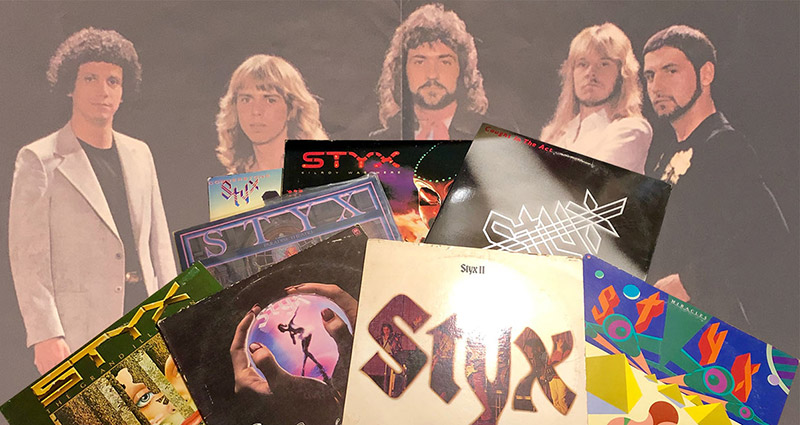If you want to understand why repetition (also known as frequency) is a critical component to a successful advertising campaign, then you will have to first let me talk about my own guilty musical pleasure: the band Styx.
Despite their ascots, platform shoes, and often-cheeseball lyrics, Styx was a multi-platinum force of nature in the late ‘70s/early 80’s. But the fact is, their huge success would never have happened without a radio station and the magic ingredient of frequency.
The radio station was Chicago’s WLS. The year was 1974. And the situation for Styx at that time was dire. They had landed a record contract in 1972 with a small label that was doing a poor job of promotion. After 2-1/2 years of zero radio airplay and feeble album sales, the band was ready to call it quits.
It was at this point in time that a DJ at WLS named Jeff Davis heard the band’s song “Lady” being played on a jukebox at a pizza joint in the North End of Chicago. He loved it. Davis returned to the station with his pizza and a mission: he decided he would play “Lady” every night at 8pm until it was a top 10 hit. For several weeks, WLS’s audience heard the song at that time, night after night (including 38 states who carried WLS’s syndicated programming). It went from an unknown track to the #2 most-requested song on the station. Other stations across the country followed Davis’s lead and began to play it as well. By March of 1975, “Lady” had hit #6 on the Billboard Hot 100, had reached the top 40 on four different continents, and had landed Styx a major deal with A&M Records. They would go on to produce four consecutive albums that each went platinum.
And it all began with repetition, and a radio station.
“Lady” is a fine song. But it had existed for two years before Jeff Davis and his pizza came along. Many of the same listeners who propelled the song into the Top 10 in 1975 had undoubtedly been briefly exposed to it when it was released in 1973. But they hadn’t been exposed ENOUGH, and so nothing had happened.
Frequency/repetition builds familiarity. Familiarity builds affinity. Affinity builds trust. Your radio commercial is an unfamiliar tune to the audience’s ears the first time it’s played. It may not even register much the second or third time. A lot of research has shown, however, that by the third, fourth, and fifth times a listener has been exposed to your message, they’ve begun to absorb and retain the content. If the content is clearly communicated and addresses the listener’s need… that’s when the magic happens. At that point, response begins to compound.
Different marketing goals call for different types of frequency, as well. There are two basic approaches, known as “vertical frequency” and “horizontal frequency”.
Vertical frequency refers to many commercials being played over a short period of time. A weekend-only sale where response must happen in a short period of time calls for a vertical approach. You’ve probably heard, “Doooooooon’t miss it!!”
A long-term branding campaign, however, where the goal is to establish a business’s location, services, and personality, should be approached horizontally—fewer plays throughout the course of a particular week, but consistently aired month after month. Dunkin’ uses this approach to keep top of mind and grow the restaurant’s following over time.
Along with playing the commercial often enough, the content must be consistent over time, as well. I’m often asked by advertisers about how often a commercial should be changed in order to avoid “burning out” the listeners. It takes a TREMENDOUS amount of repetition before anything even approaching overkill starts to become a concern. My recommendation is usually that a single commercial should be refreshed about once a month… and multiple commercials running in rotation with each other (meaning you’re running 4 commercials 25% each, for example) have an even longer shelf life of two or three months.
Repetition and the right audience are a powerful combination. Play your commercial often enough, and it won’t be the Billboard Hot 100 telling you that you’ve succeeded—it will be an increase in the number of customers coming to take advantage of what your business has to offer.
That’s a song worth singing all day long.








